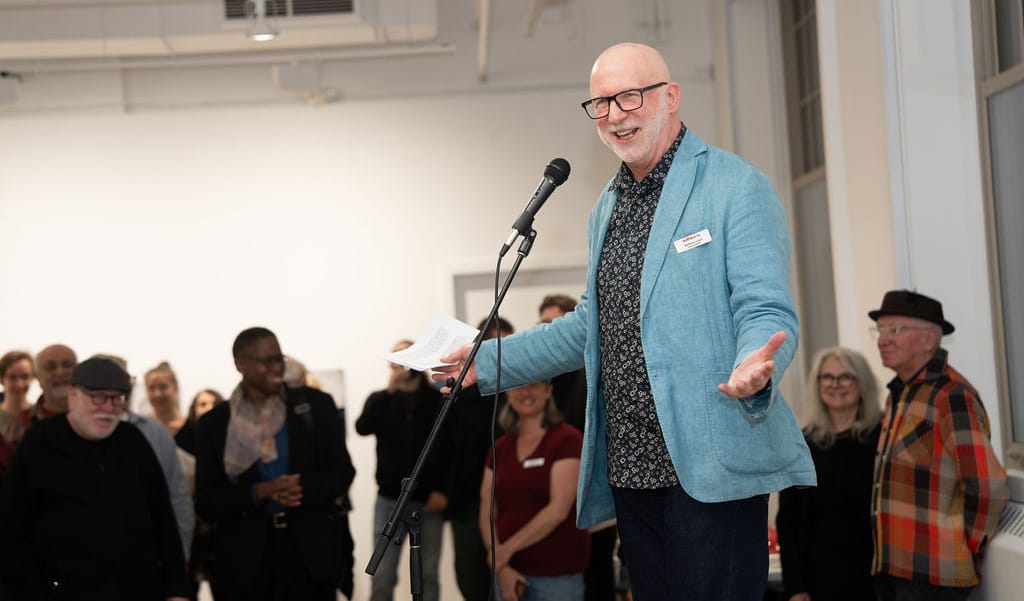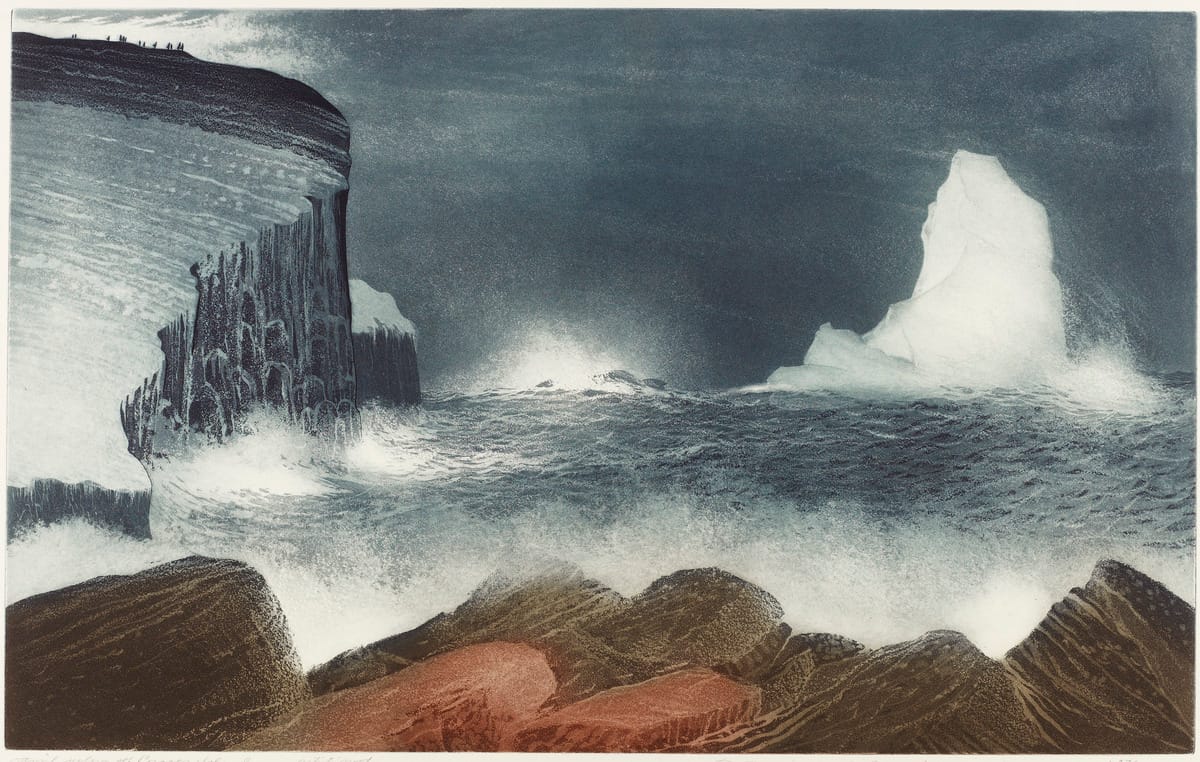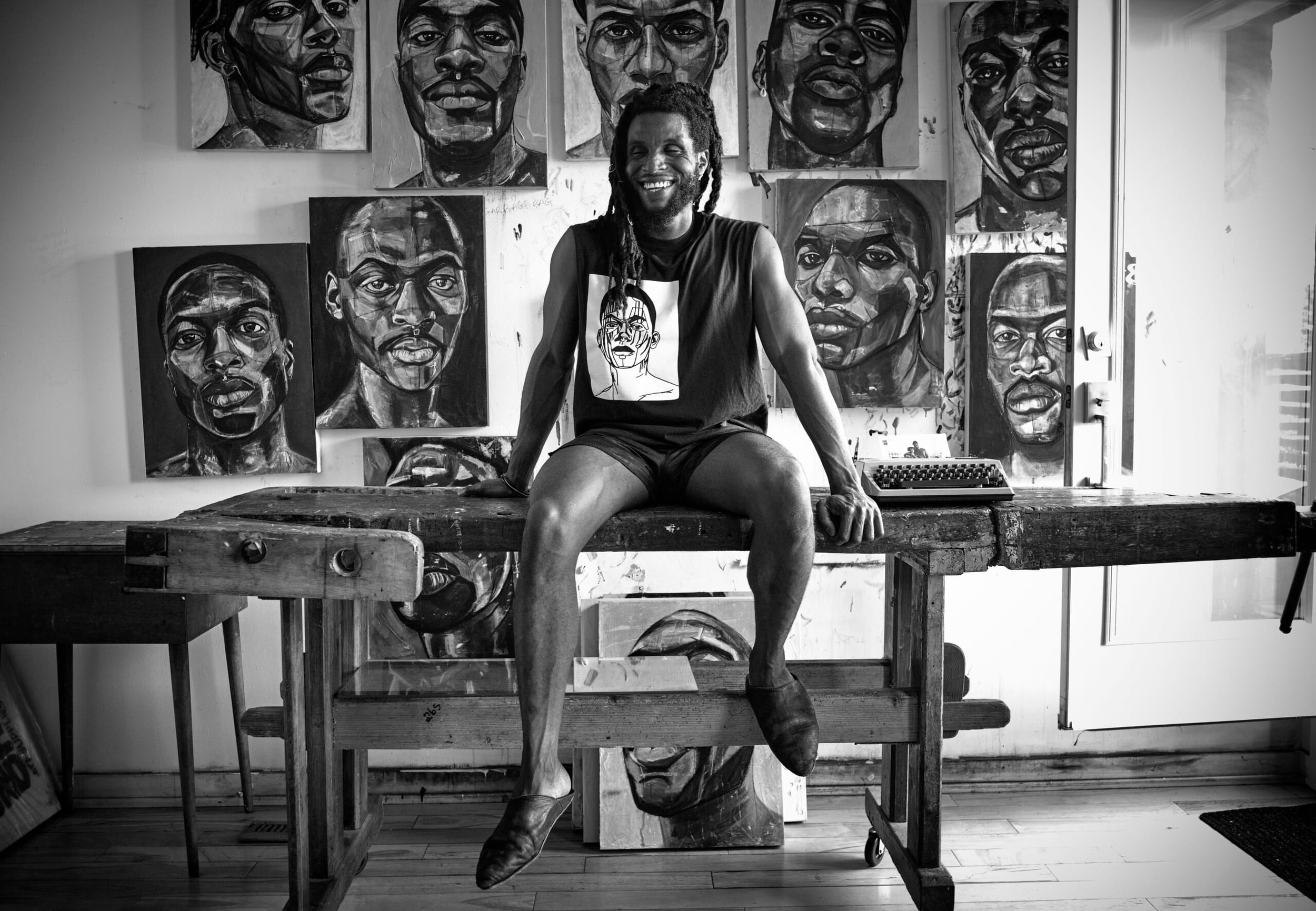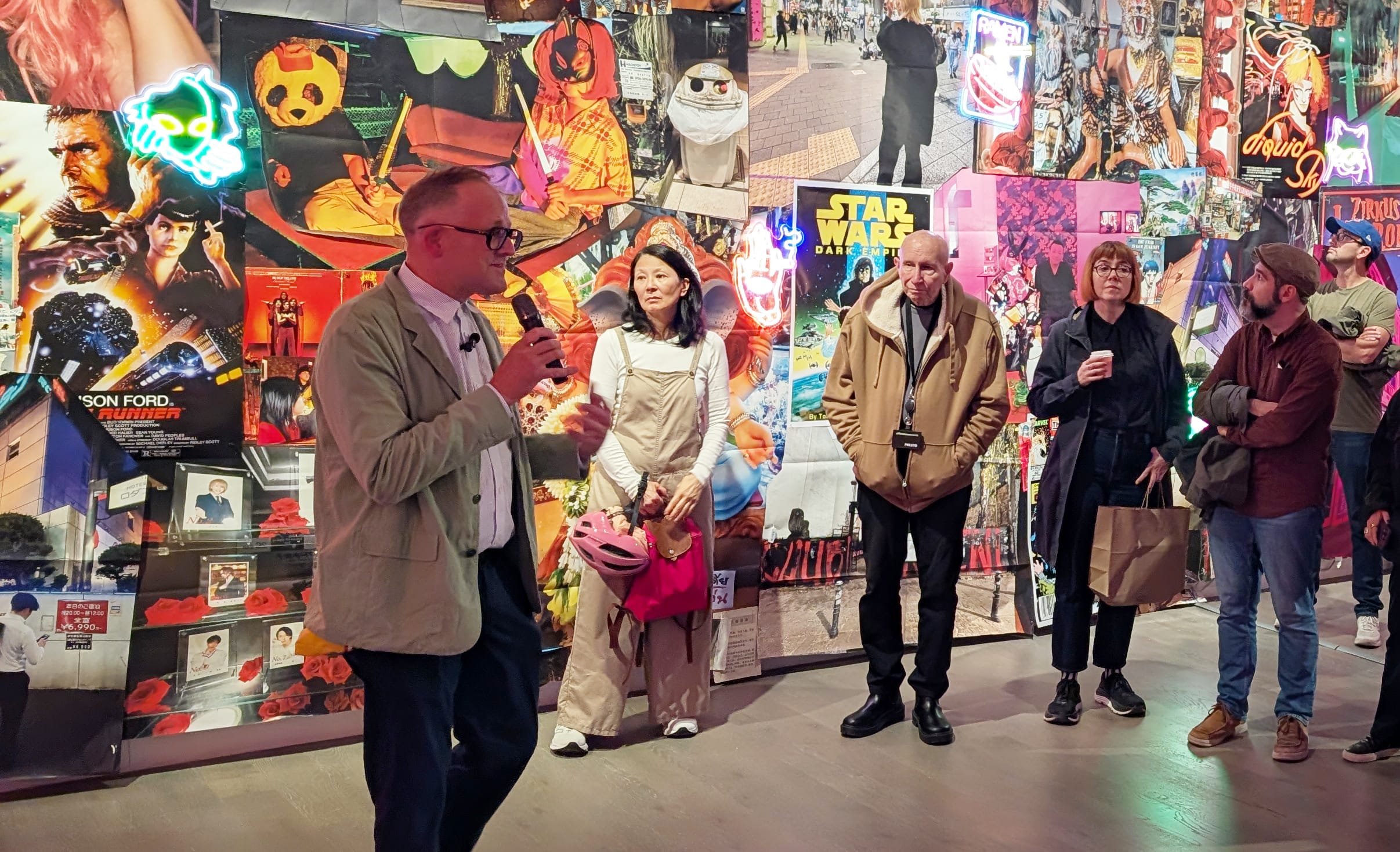“Could I Bring Goats In?” — A Vaudevillian’s Eye for Everyday Wonder
In Koffler301’s inaugural exhibition, Sage Szkabarnicki-Stuart uses goats, pigeons, and plastic bags to strange, slapstick effect, blurring the boundary between the mundane and the magical.
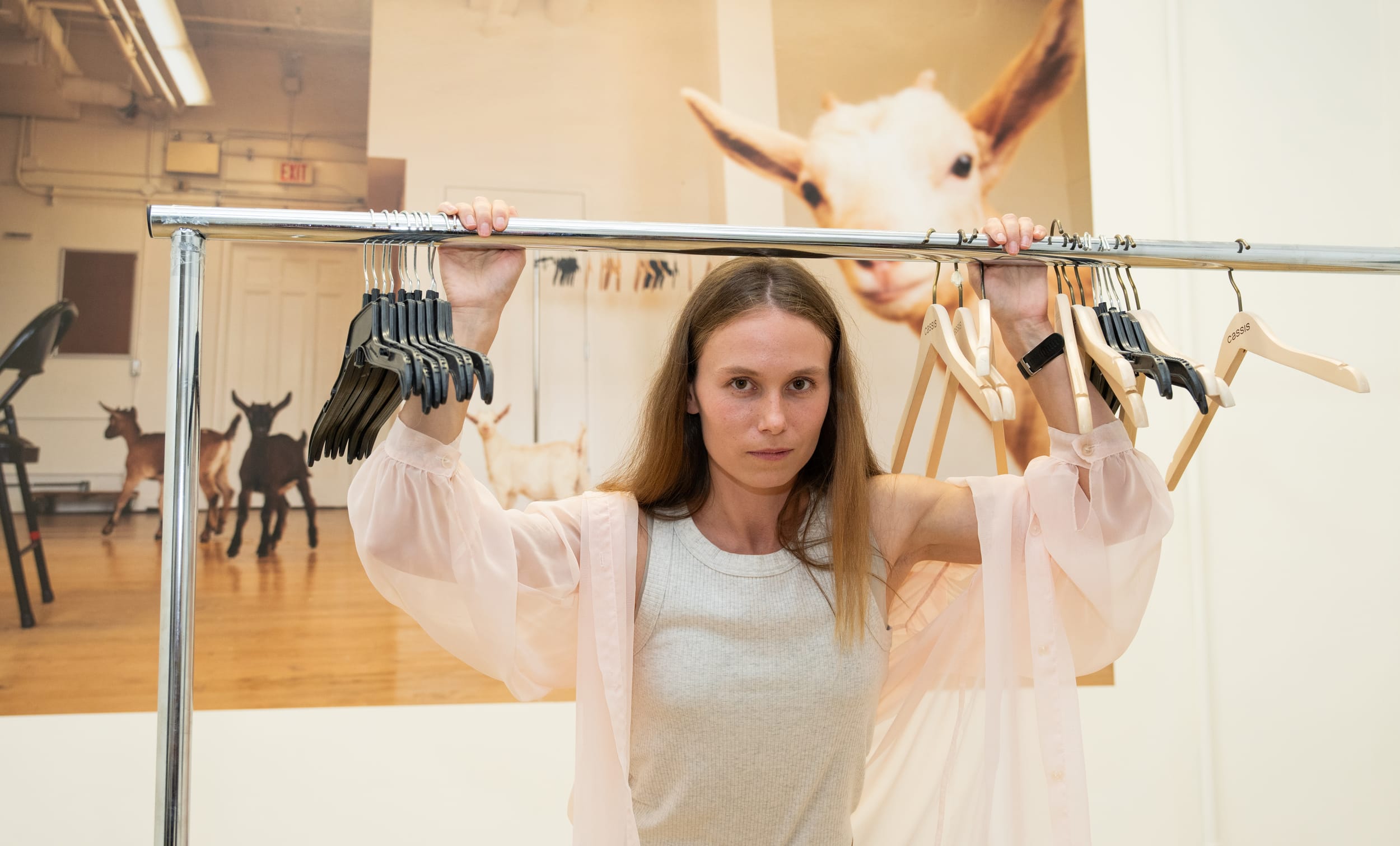
In the whimsical photographs and videos of Sage Szkabarnicki-Stuart, currently showing at Koffler301, the artist herself is often the only human character—wrapped in plastic against a fence, curled up in bird nests, or doing her makeup in a pond next to a swan. Whether it’s her surreal and theatrical self-portraits, slapstick videos, or her explorations of animal behaviour, the world she creates exists somewhere between fairy tale and environmental allegory, typically staged with an absurdist’s eye.
Born in Toronto and now based in rural Ontario, Szkabarnicki-Stuart studied animation before switching to photography in her early twenties, gradually developing an artistic practice that draws together her interests in early cinema, vaudeville, advertising, and performance art, citing Chris Burden, Laurie Anderson, and Cindy Sherman among her influences. Szkabarnicki-Stuart’s solo exhibition WONDER, curated by David Liss, runs until July 27.
Though WONDER marks the inaugural show at Koffler301, its staging comes with a bit of a twist. The former classroom and office space on the third floor at Youngplace is slated for renovations this summer, but Koffler Arts General Director Matthew Jocelyn suggested to curator Liss that they sneak in a show before the reno begins. “I thought this was a fantastic idea,” says Liss, “invite an artist who could do something interesting with this unusual situation, the space being a little bit rough and not exactly a gallery yet.”
Szkabarnicki-Stuart lived up to the site-specific challenge and then some. Not only does she make playful use of the rawness of the space in presenting a selection of her past photographic and video work, she made the “unusual situation” more unusual still by bringing goats into the makeshift gallery for a photo sitting, and reproducing the results where they were posed. (The goats are Szkabarnicki-Stuart’s own, kept at her home outside the city. Her instagram bio declares, “Mostly selfies and goats.”)
On June 14, Koffler Arts hosted a conversation between Szkabarnicki-Stuart and Liss, during which they discussed the thinking and process behind Szkabarnicki-Stuart’s work, as well as some of the unexpected detours where her art has taken her.
When you and I first met, you really liked the space and saw the opportunity to do something interesting outside of the usual white cube format. What was the thinking behind how you responded to this space?
I got a tour of the space by a lovely woman, Meredith Kenny [Koffler Arts’ Gallery and Production Manager], and I asked her, “Could I bring goats in?” She assured me that Koffler would ask permission—and they got permission. That was really the hook for me.
The way I normally work is I’ll find a place that I think is interesting, so the set pieces and the narrative are all driven by what is just there. I’m always finding things that exist within the space and then sort of creating a story around it.
A lot of the time the places I show are kind of mundane, which is why something like a former office space is so fun to work with as an element. When you then recontextualize, it makes you appreciate the space a lot more. That tree covered in plastic bags, for instance… somebody messaged me about it, it was in North York. If you drove by it, you wouldn't think it’s that exceptional. But just because it’s not exceptional when you take a quick look at it, that doesn’t mean it doesn’t have a lot of potential. If you sort of step back for three minutes and think, if an alien was here and they didn’t see plastic as ugly, they just saw it as neutral, you start to ask what is it that’s special about plastic, the characteristics of the material. Similarly with the goats, where you’re trying to make a space that people might overlook into something special.
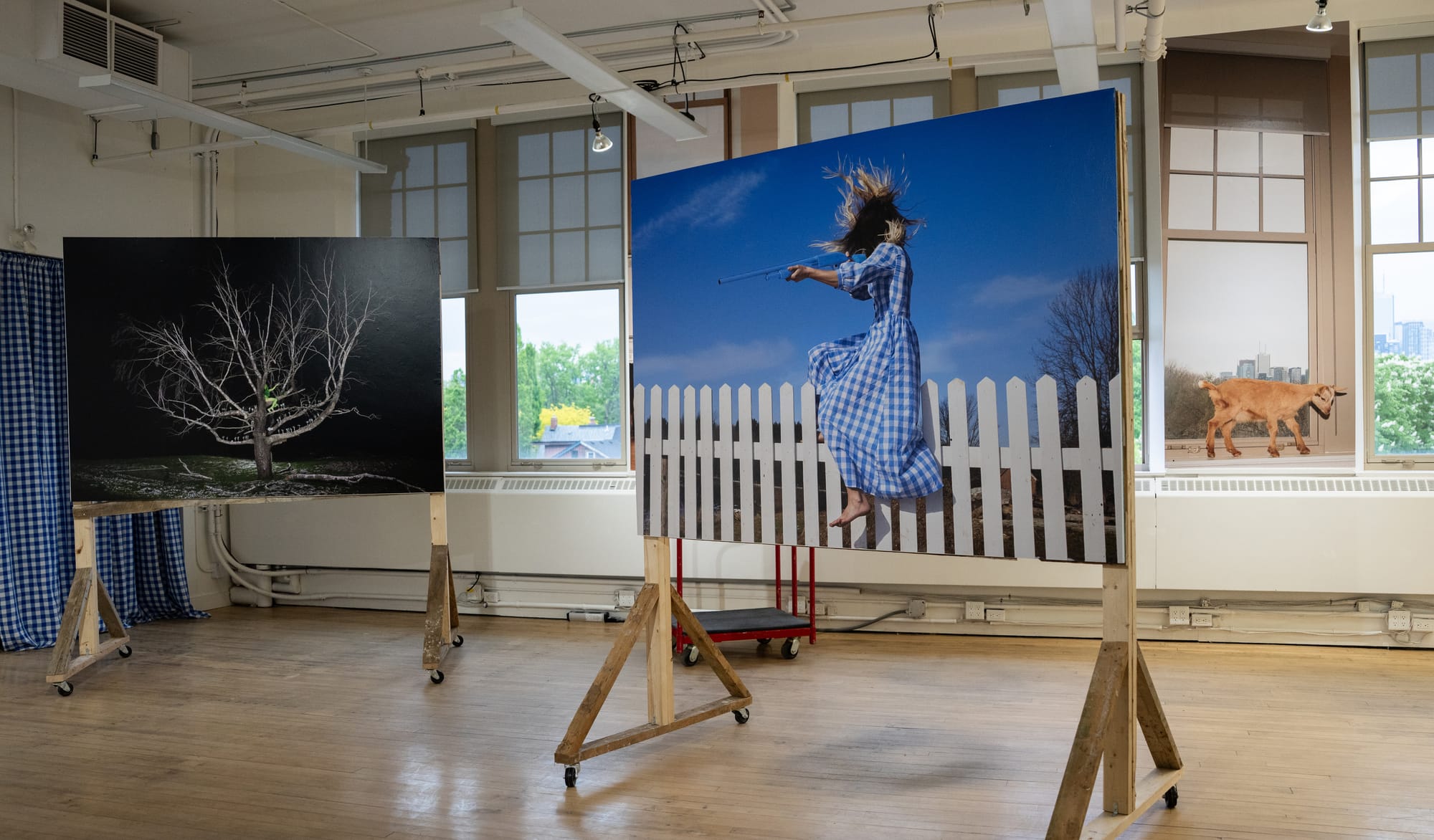
Could you talk about the many influences in your work, among them advertising?
My dream was always to work in advertising. A few of the pieces here were originally just supposed to be portfolio images so I could get advertising jobs. The way it turned into art was really my mother submitting my work to an art fair so I could get a free booth, and I won. I was like, “No one’s going to buy this,” but she printed off my images and that’s how I got into art. It’s very commercial-looking stuff, like something you’d see on a bus shelter because that’s what I was trying to make it look like.
Lighting is another important influence, and when I talk to other photographers it’s something they notice. I think there’s this whole generation of photographers around my age that were heavily influenced by the photographer Benoit Paillé. I swear to God, so many of us have taken his work and just run with it. It’s been the source of so many people’s lighting styles and it’s really dictated by budget because basically it’s speedlights, like cheap commercial flashes which you can put a reflector on, and then it’s like a single light.
I would say in terms of other artists and what I’m influenced by, it’s definitely people that I found online. They were popular on Tumblr or something. Because that’s what you see when you’re first starting out. It has dictated my entire style. The other influence would be traditional painting and composition techniques.
In your work there’s such a sense of wonder about the everyday. These gestures and performances for the camera, they just seem to have this fresh sense of wonder about them. Another key influence for you is the cinema of attractions.
Yeah, the earliest cinema, like the very short films the Lumière brothers first screened in Paris, and A Trip to the Moon (1902) by Mélies, with the rocket ship that flies in the moon’s eye. I was obsessed with that stuff—that and Disney’s Fantasia. I was lucky enough to go to art school and they hated that stuff. They said it was so lowbrow and just a technical exercise.
Those types of films might lack a narrative, but when I see the types of videos that people are attracted to on social media and online today, there’s something deeper than just a technical spectacle. A lot of the time they’re very short, 30 seconds to a minute, and they hit a very tight emotional beat that just tickles you in a way that is so important. Sometimes you just need that, and people used to get it from a really good joke that someone would tell, but now you get it from an Instagram reel. Or back in the day, you would go to one of the screenings the Lumière brothers would put on featuring several of these early films, which were all less than a minute long.
My stuff is definitely more in that vein, it’s not film really, or a narrative piece. There’s this performative aspect. Usually, I have to reshoot them at least three times. The one I did with swans took me a month.
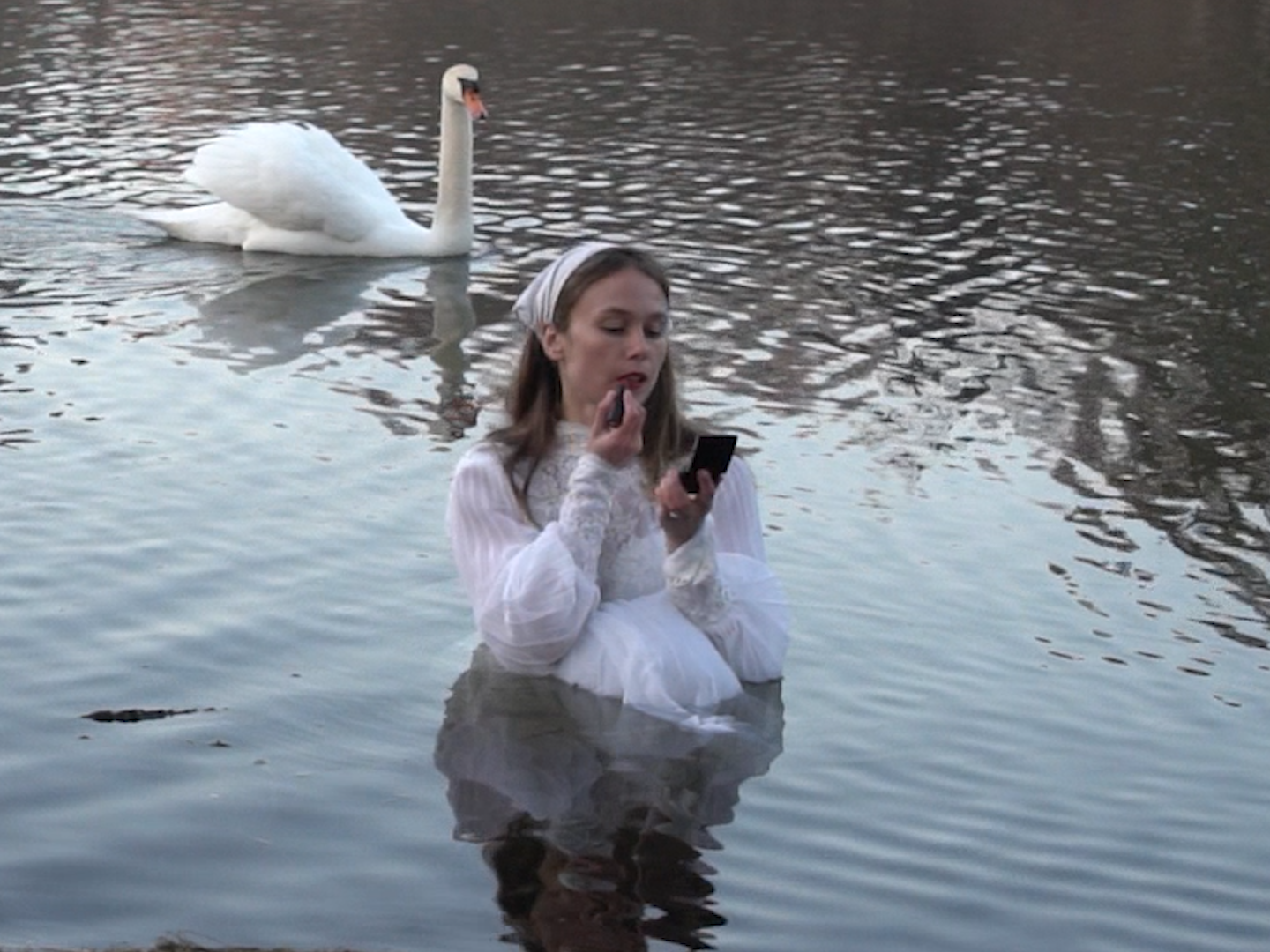
Could you walk us through this piece with the mall from conception to process?
Yeah, that’s the Galleria Mall before it was demolished. At the time there were these old guys who would come with bags of bread and feed the pigeons, and there were a lot of pigeons. What I wanted to do was have them come up to me using sprinkles I bought from Bulk Barn, because I wanted to incorporate cheap, everyday objects. This was for a project about species that aren’t very appreciated.
Anyway, first I had to get the pigeons used to me. This is kind of bad, but I kidnapped five pigeons and kept them in my apartment for a few days because I thought that would tame them. They just hated me. So I let them out. Then I started giving the pigeons in the Galleria parking lot bread and, eventually, I was able to get them to sit in my hand.
So I’m topless in a parking lot by myself early in the morning with a bunch of birds. The first time it didn’t work and I broke my pinky toe. The second time, I did get something. All in all, it probably took a few weeks to do. It’s so much effort, I don’t know if it's worth it. I guess it’s worth it?
Well, that’s a pretty compelling image.
I did a pretty deep dive into research on pigeons. I wrote an entire essay. I’m not sure anyone read it. It’s all very process-driven and you have to know exactly where you’re going to put the camera. You have to know how to get the pigeons to come up to you. You have to get the right time of day.
[To the audience] So Sage sent me a bunch of videos to go through and then separately, a couple days later, she said, “Oh, here’s another one I have,” and sent me the one with the swan, which blew me away. To me it’s just so mesmerizing and beautiful.
You know how sometimes in the subway you see people putting on makeup, and it’s kind of sweet, but some people might think it’s inappropriate and unhygienic. I like this idea of the boundaries between public and private space being tested.
You say you like responding to situations or, in some ways, provoking situations. But this is the first site-responsive show you’ve had.
I like it a lot. It feels very natural, just because you could have any show in the space where you shoot it and then build off of that quite easily. I love to see when people walk in and then they put two and two together, because at first they might not realize that the goats in the images were actually here. That’s the enjoyable part, when someone has to figure it out. But it can’t take too much work, because if it takes longer than five minutes, a lot of people will move on. You need to get the balance where it’s just enough time that they actually will figure it out.
I’m a big fan of the novel Life of Pi. There’s this idea that you’re walking and all these crazy things are happening around you, but you might not be aware of it, or it might take a little bit of work to see them.
I’ll tell you this anecdote. One day I was driving to Koffler Arts and I came across a dead possum. I stopped and took the possum off the street and then I noticed it had a pouch—it’s kind of gross—but I opened the dead possum’s pouch and inside there were five babies still alive. So I took the babies and carried them in my bra, then went looking for hot water and formula. I went into a coffee shop, showed them the babies, and asked if I could have some hot water. The barista’s like, yes, absolutely excited. I think there’s something about how you can create a little adventure that brings strangers together in a way that’s really lovely with just a little bit of time and creativity. It doesn’t have to cost any money.
This transcript has been edited for clarity and length. Wonder runs until July 27 at Koffler301.


